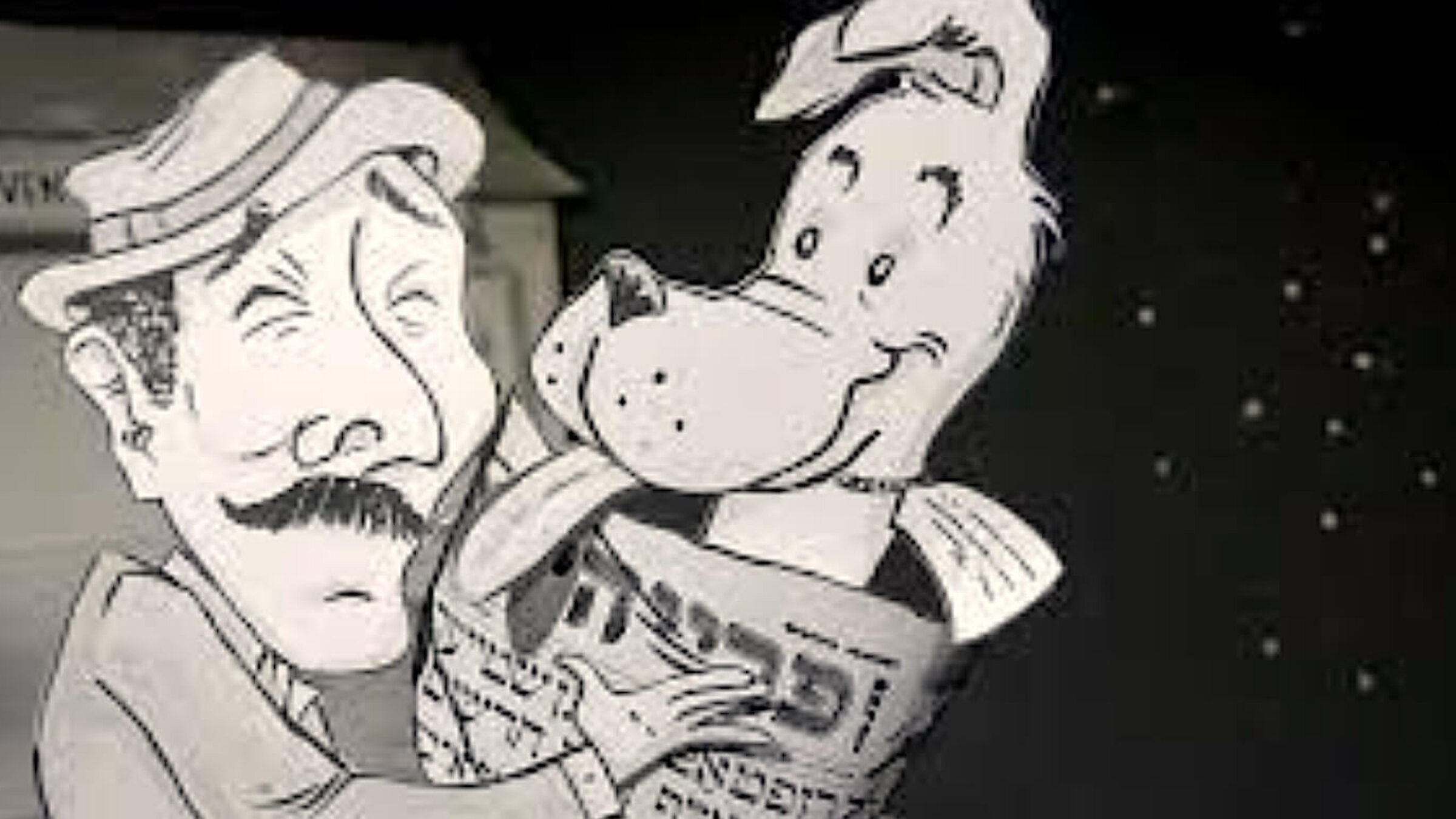Classic Yiddish holiday tales can provide hope in these dark times
Secular Yiddish children’s literature relayed the political aspirations, values and anxieties of Ashkenazi Jewry during the 20th century

A still from the short film “Labzik: Tales of a Clever Pup”, based on the 1935 book by children’s author Chaver Paver Courtesy of Theater Emory
When it feels like the world is spinning out of control, Jewish communities ground themselves in the consolations and demands of the annual holiday cycle. As the 13th-century rabbi Abraham of Girondi wrote in one of his liturgical poems: “May the year, with its curses, end, and the (new) year, with its blessings, begin.”
For the past decade, I have studied one way that Jews relied on rational hope in dark times: by creating literature for children who spoke and read Yiddish. Secular Yiddish children’s literature, most of which dates from the interwar period but continued to be published into the 1970s, provides a new way of understanding the political aspirations, values and anxieties of Ashkenazi Jewry during the 20th century.
Holiday tales were an especially lively arena for imagining a Jewish future in a shenere un besere velt— a more beautiful and better world. Especially after the Holocaust, these tales served as a vehicle for imparting basic knowledge of the motifs and practices associated with each special day on the Jewish calendar, while speaking to a community that had moved far away from traditional ritual observance.
Today we can mine these stories, written by avowed socialists, Zionists, Yiddishists and communists, to understand the ideological frameworks of their authors and to find material that continues speaking to the children in our lives — and within ourselves.
Recently, I translated into English a series of tales and poems connected to the Jewish calendar, which the Forverts has agreed to publish for each respective holiday. Starting it off is Levin Kipnis’ 1961 story “A Zis Yor”(“A Sweet New Year”) which you can read in the original Yiddish.
Kipnis (1894-1990) was born in Volhynia, in what is now Ukraine, into a family of 12. He distinguished himself early on as a visual artist, craftsman and calligrapher, and having become an ardent Zionist, he left for Palestine in 1913 to study art at the Bezalel Academy of Art and Design.
He made his career as an educator and author, swiftly becoming one of the founding figures in modern Hebrew children’s literature. In Israel, he is remembered for the more than 800 stories and 600 poems he penned in Hebrew for young readers. However, in 1961, he published a collection of holiday tales in New York as a “gift” to the Yiddish-speaking children of the diaspora. Two similar volumes would appear posthumously in Yiddish with the leftist Tel Aviv publisher Yisroel Bukh.
Several images and motifs in “A Sweet Year” reflect the author’s commitment to secular Zionism. Regarding the species of fruits eaten on Rosh Hashanah, for example, he highlights those crops associated with the land of Israel, such as grapes and pomegranates, rather than apples.
His inclusion of four protective angels evokes a midrash in Numbers Rabba, familiar to most of his readers through the recitations accompanying the bedtime Shema prayer, with their mention of the archangels Michael, Gabriel, Uriel and Raphael. Similarly, the idea of angels pairing up to carry what must have been an immense grape cluster on a pole seems to reference the biblical story of the spies Moses sends to investigate the land, who return with specimens of its enormous fruit carried in the same fashion.
Kipnis’ devotion to 20th-century Zionism is also discernible in his emphasis on agriculture and the comforts of gastronomic Judaism. His readers living in the Diaspora and those in Israel might be living very different lives, but they can all agree on the consoling power of challah dipped in honey to sweeten the new year.
Read “A Sweet New Year” by Levin Kipnis.

















